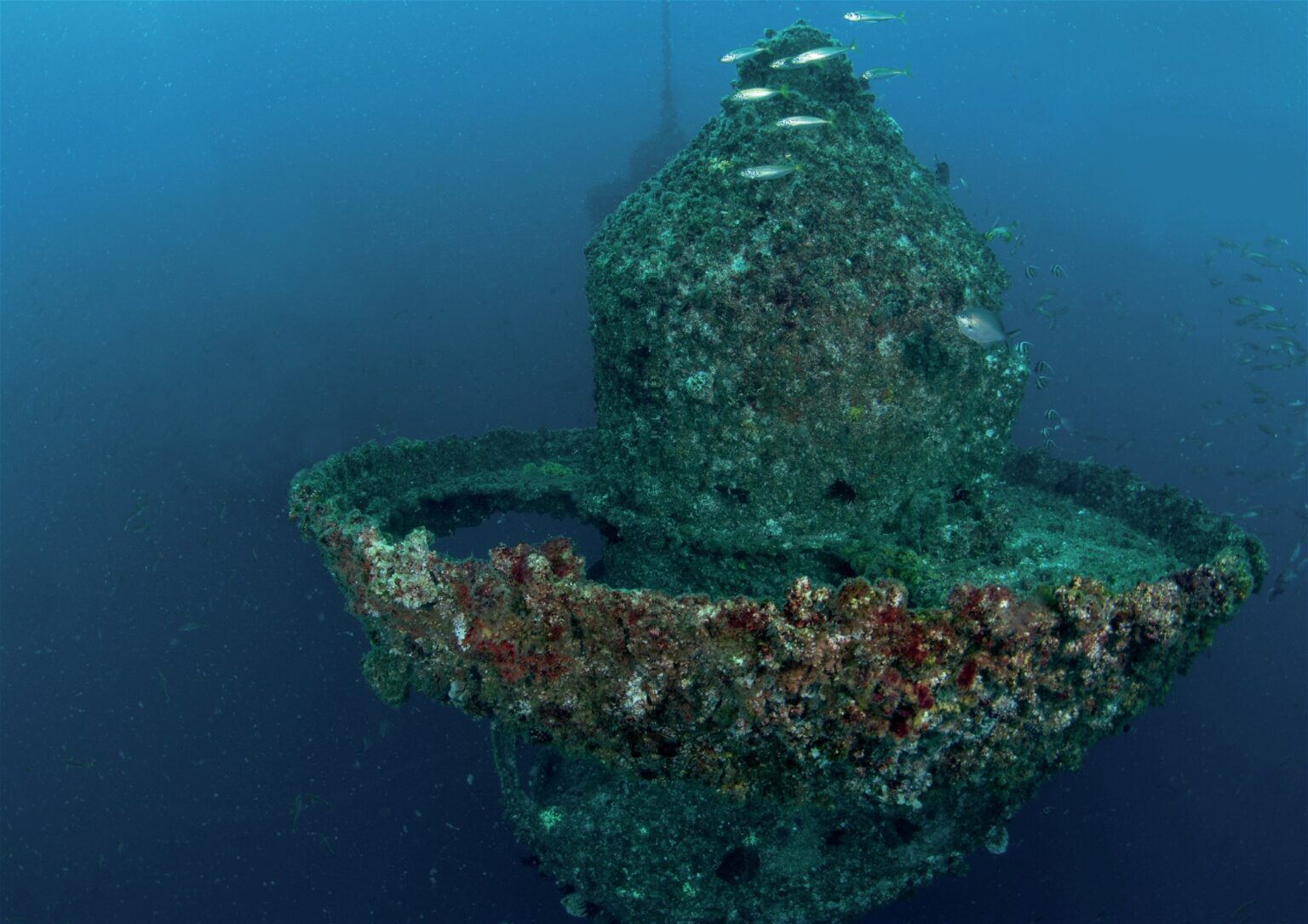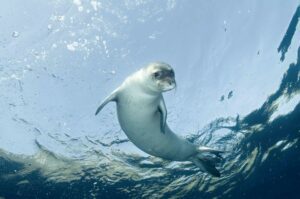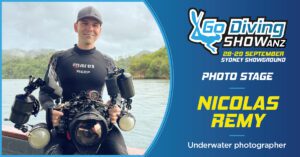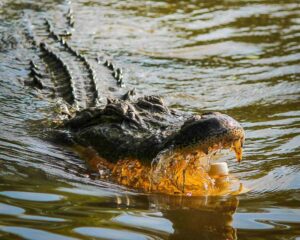Adrian Stacey explores Queenland’s latest artificial reef, the floating Wonder Reef, and finds that the innovative structure more than lives up to its name
Diving is not the first activity that springs to mind when considering visiting the Gold Coast. However, to my surprise, this surfer’s paradise and the party capital of Queensland has many excellent dive sites, boasting historical wrecks, stunning reefs and even grey nurse shark aggregations.
The Winning Design: Scubcon Blue Solutions
The City of The Gold Coast, with the help of the Queensland Government, felt that the addition of an artificial reef to the region would be just the stimulus needed to attract more divers. So, just a stone’s throw from the hustle and bustle of this thriving city, a site was chosen for the latest Gold Coast attraction – Wonder Reef.
Potential vendors were given a remit and were asked to submit their visions of how this new underwater realm would look. The new reef had to be an iconic structure that could withstand the harsh underwater environment and occasional stormy weather the region endures. The reef had to be safe, eco-friendly, and accessible to all levels of divers.
The Structure of Wonder Reef
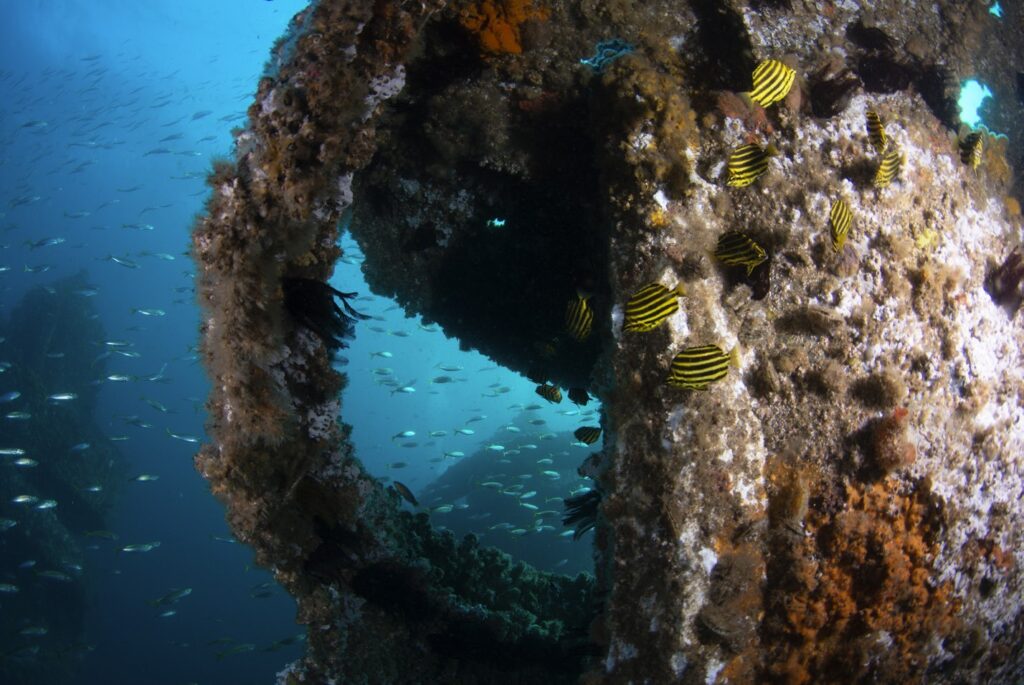
The winners of this tender process were reef experts Scubcon Blue Solutions, who came up with the unusual idea of a buoyant reef. To help realise this concept, they enlisted the help of renowned Queensland sculptor Daniel Templeman. The artist’s inspiration came from hot air balloons floating in the sky, giving the impression of weightlessness and creating exceptional depth of field.
The site chosen for the project was at a depth of 30m, so to make the reef accessible to all levels of divers, the design team decided on the idea of a buoyant reef. Beginner divers could stay around the upper reaches of Wonder Reef, while more advanced divers could explore the depths. However, this type of design comes with its challenges. Trying to make a structure that is buoyant, aesthetically pleasing, and interesting to dive while also creating an enticing habitat for marine life was not easy.
Wonder Reef comprises nine flute-shaped buoyant sculptures wrapped in rings to create swim-throughs and living spaces for marine life. These sculptures are clustered into three groups of three. They are spaced about ten to 15 metres apart and are anchored to the ocean floor at a depth of 30m using substantial 72-tonne concrete and steel pyramid-shaped foundations.
Diving at Wonder Reef
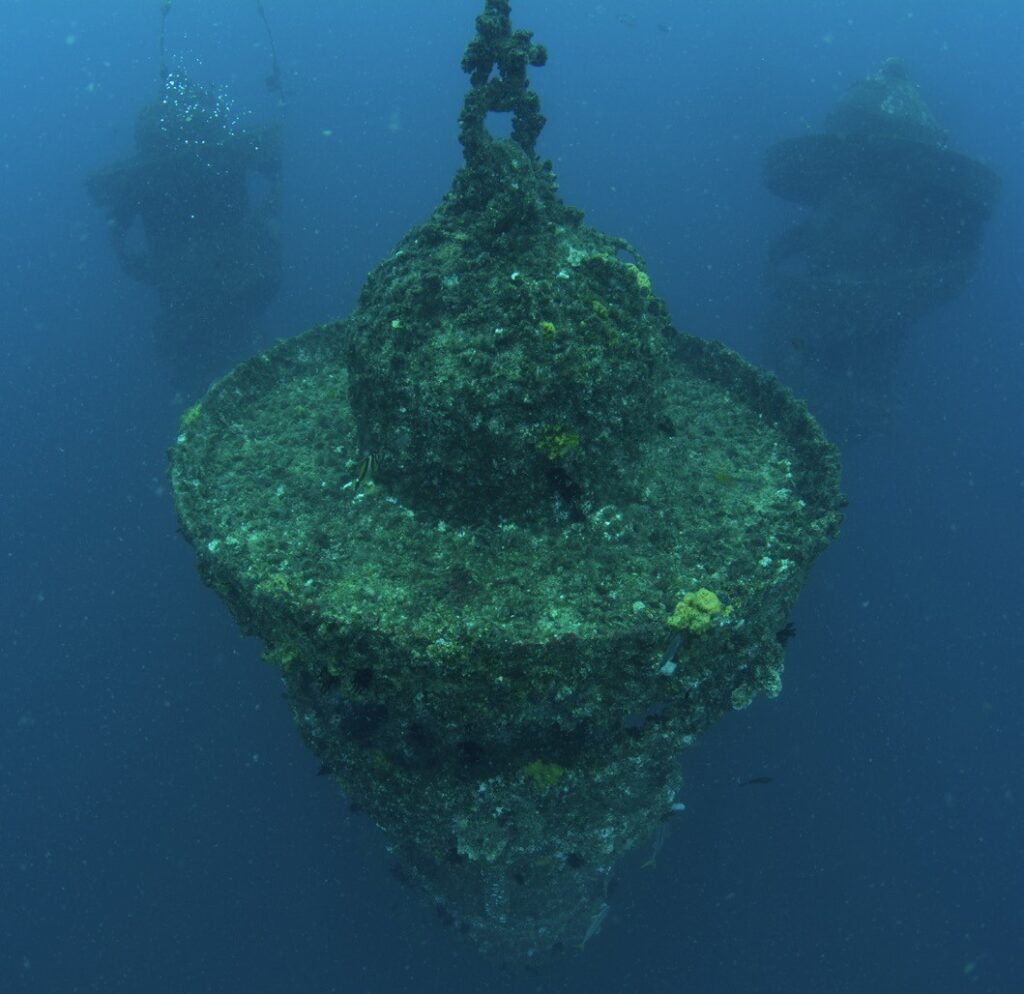
From the foundation, huge chains rise like giant kelp. These chains then connect to the bus-length sculptures, which resemble upside-down bells and reach to about 7m beneath the surface.
Shortly after Wonder Reef opened on 3 June 2022, I was invited to dive on this unique artificial reef. Situated 2.5km from the shores of the Gold Coast, I was intrigued to discover what the world’s first buoyant reef looked like and if it would live up to its name. I am happy to report that it looks stunning and definitely lives up to its name for several reasons. For a start, the design, engineering and installation required for such an ambitious project are phenomenal. Wonder Reef has been built to withstand cyclone conditions, including 18-metre waves. Australia’s largest floating crane was used for the installation, and 846 tonnes of concreate and steel was needed to create the 32,000 cubic metres of new reef habitat, all using environmentally friendly materials.
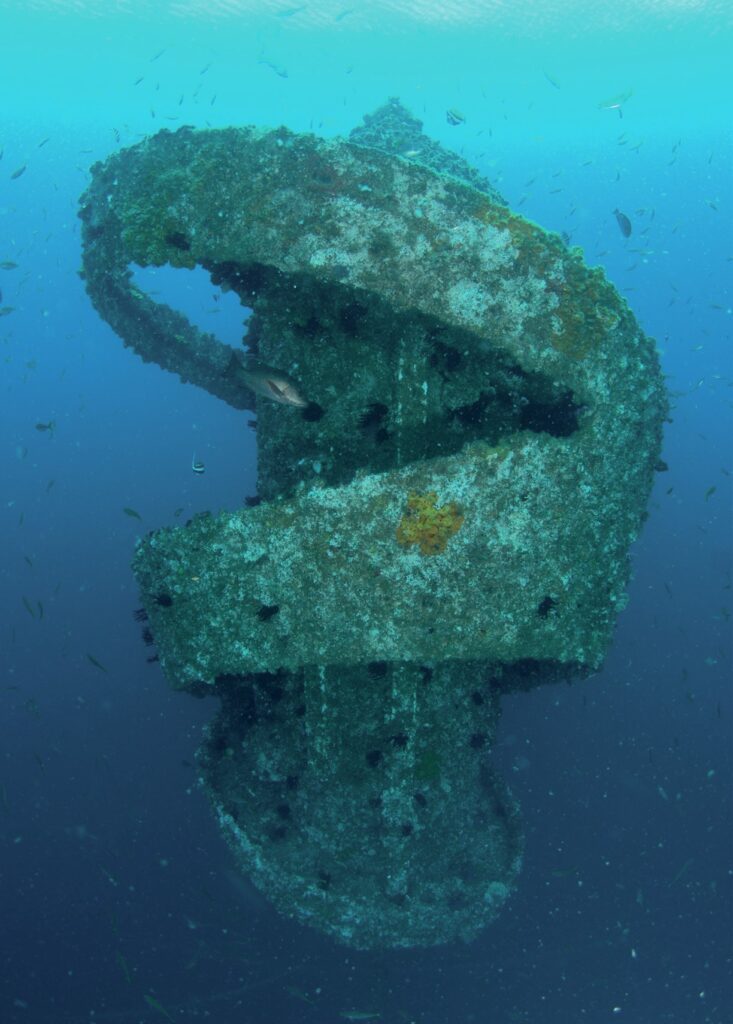
The Impact of Visibility on the Diving Experience
Visibility on the reef can vary greatly from five metres on a bad day to 30 metres on a very good day. For my first dive on Wonder Reef, we had around ten metres. The effect of these vast sculptures floating in the ocean is quite spectacular. Each one is slightly different, but they all have plenty of openings and ledges that allow light and currents to flow through, creating an ideal habitat to encourage coral growth and providing a perfect home for fish and invertebrates to thrive. As we approached the first cluster of three, I was impressed with how much marine life had already colonised this floating reef. The sculptures are covered in algae, sponges, barnacles, and urchins. Soft and hard corals have also begun their colonisation. We found tiny nudibranchs and small reef fish like gobies, blennies, hawkfish and bannerfish seeking shelter in and around this new environment.
Did you know?
Explore swim-throughs with Indian scad bait fish, giant gold-spotted rock cod, Queensland grouper, and sequined mulloway and admire the flourishing coral as it evolves over time. And don’t forget to take a photo on the underwater landing platform to capture memories that will last a lifetime.
Exploring the Depths of Wonder Reef
After spending several minutes searching the reef for little critters, our guide indicated for us to descend to the seabed to explore the depths. The huge pyramids at the base of the installation were shrouded with bait fish and juvenile fusiliers. The hollow insides, which make great swim-throughs, were inhabited by masses of cave sweeper. Lionfish lurked around the exterior, poised to strike, and moray eels, giant gold-spotted rock cod and massive Queensland grouper also inhabit the deeper regions of the dive site near this abundance of food.
From the gloomy depths, we ascended the anchoring chains. Their considerable links were populated by a host of small invertebrates’ sponges and magnificent ascidian.
Marine Life Among the Flutes
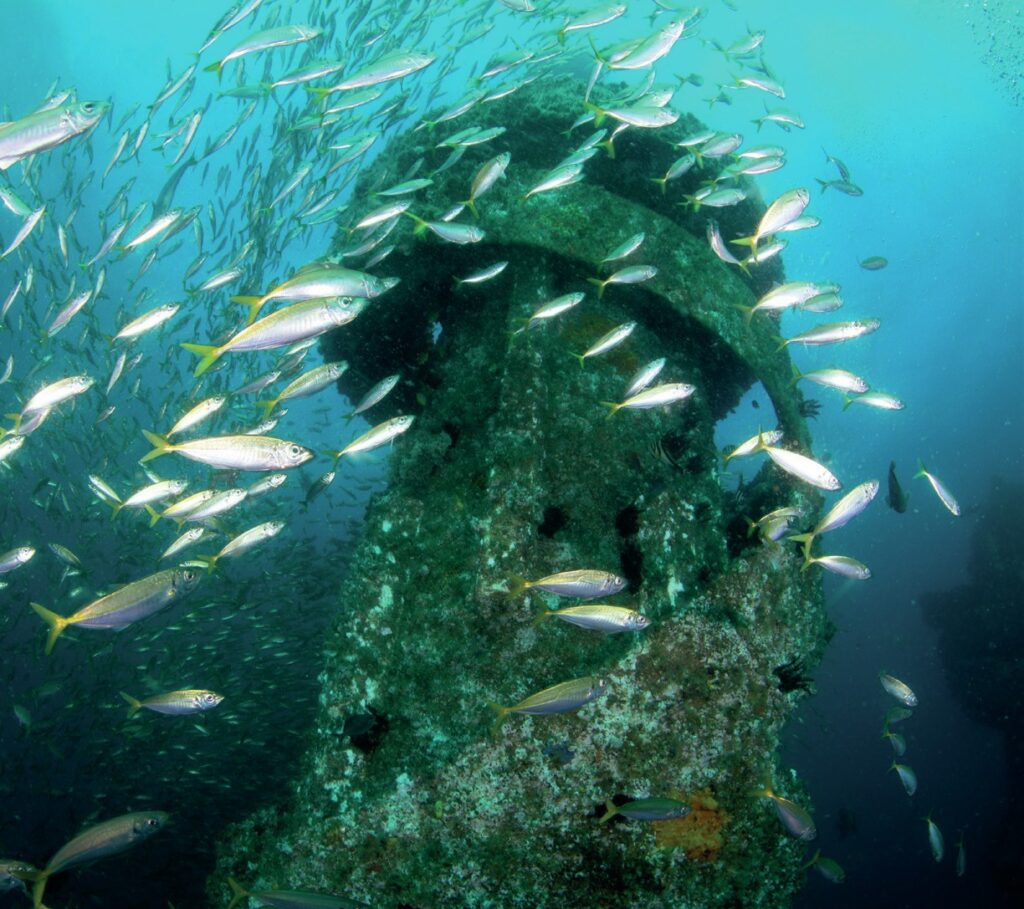
Once back up among the flutes, we explored the other clusters of the installation, each one showing the same impressive colonisation of marine life. Swirling between the reef structures, we encountered a massive school of yellowtail fusiliers and Indian scad bait fish. The larger predators were never far behind such a banquet, and soon enough, we spotted wahoo and tuna cruising around the outskirts of the schooling fish.
A Panoramic View of Wonder Reef
My second dive on Wonder Reef came a couple of weeks later. The visibility was around 20 metres this time, and I was just about able to make out the installation in its entirety. Batfish hovered around the upper reach of the flutes, and the vast schools of fish and accompanying predators were still in attendance. Only this time, we could enjoy a more panoramic view of the action.
The Evolution of Wonder Reef
The varying visibility of the dives means that each time I have visited this site, I have enjoyed very different experiences. The first time with the reduced visibility meant I spent more time searching the nooks and crannies for critters, while the better visibility of my second visit allowed me to see the site in all its glory and witness the full extent of the marine life that is already calling this reef home.
Did you know?
This underwater adventure is located in one of the most spectacular locations on Earth and is suitable for all levels of divers ranging from beginner to advanced.
To assist in mapping the progress of Wonder Reef and what creatures are attracted here, two permanent acoustic receivers have been placed at a depth of 28m. One receiver is a hydrophone that records the sounds of various creatures, from dolphins and whales to fish and shrimp. The second receiver is used to detect sharks and other fish that were tagged with acoustic transmitters. These receives will provide valuable information about how marine life uses the reef. There are also plans to live stream sound so everyone can hear the reef and immerse themselves in the underwater world.
In a short time, the cycle of life has already begun in earnest at Wonder Reef. The algae that flourishes here has attracted the smaller fish and invertebrates, which have in turn, attracted slightly larger fish, which the predatory fish have followed. The reef is constantly growing and will only get better and better over time, attracting more coral growth, plant life and marine species. It will be fascinating to witness its evolution.
This article was originally published in Scuba Diver ANZ #52.
Subscribe digitally and read more great stories like this from anywhere in the world in a mobile-friendly format. Link to the article
